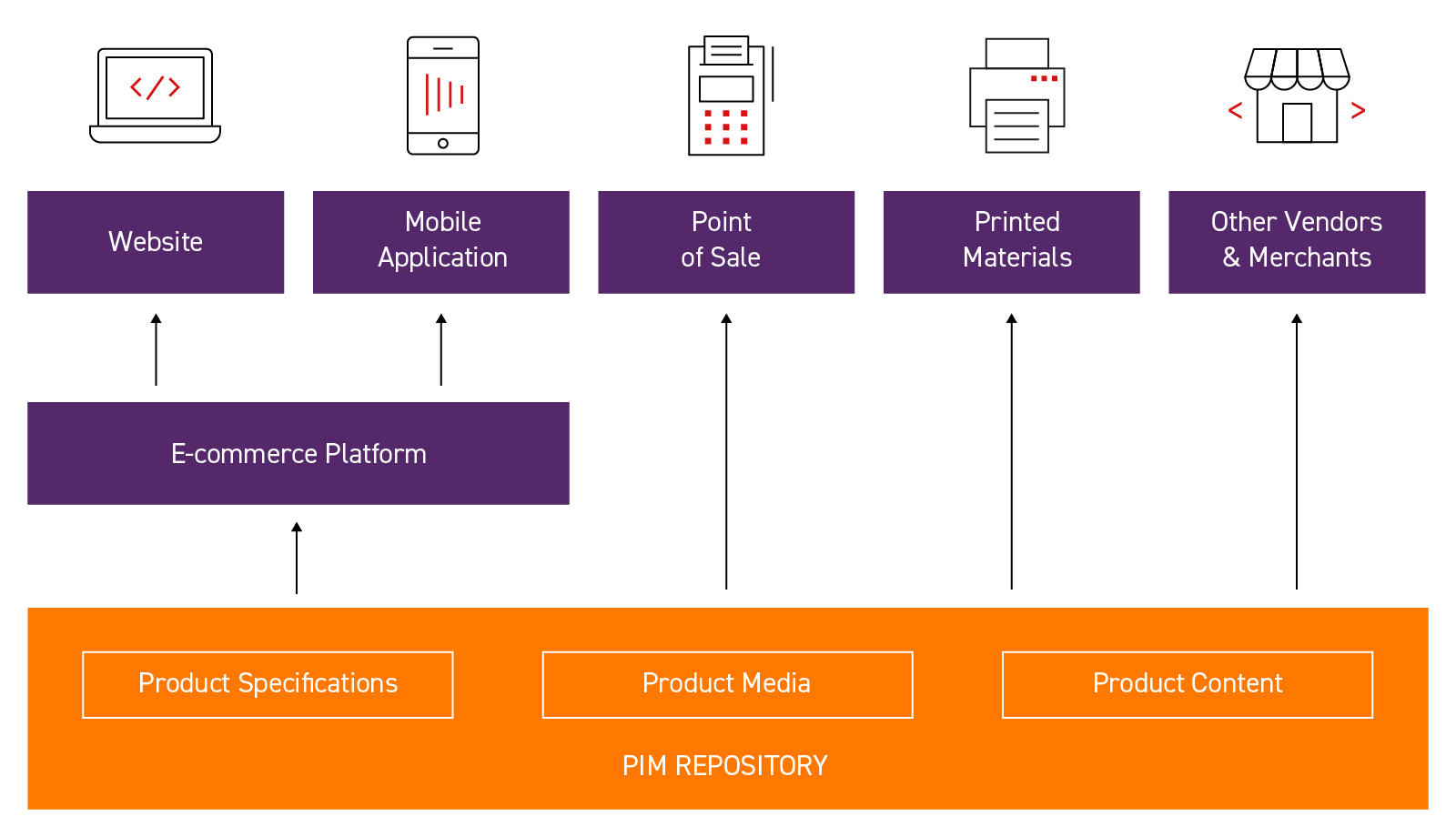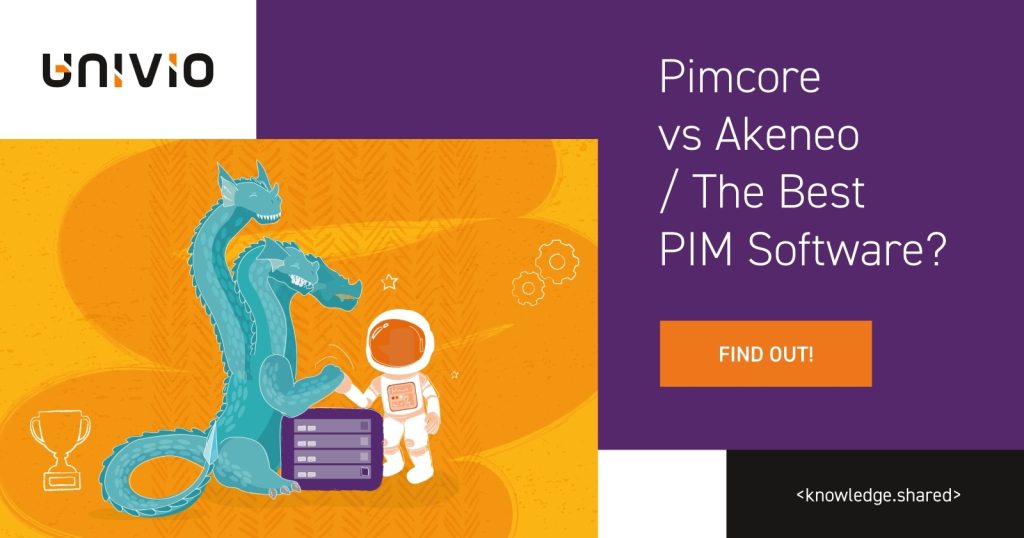What is PIM and When Is It Worth Implementing?
Effective communication is at the heart of relationships, including those in business. But in order to deliver to customers and partners what they want to hear, we need consistent product descriptions and information that can answer any potential concerns.
We wouldn’t be ourselves without sharing that, in such a situation, technology comes to the rescue. Specifically, Product Information Management (PIM) class systems, which should lie at the heart of your company’s communication strategy. Instead of blood, updated, consistent and accurate product data flows to all sales channels, marketing, logistics, customer service and other departments, including inside the organization. Let’s find out why product information management is so important to an organization, how exactly PIM systems work and when it’s worth implementing them.
PIM System / What Is It and How Does It Work?
The main task of a product data management tool is to provide relevant, complete and up-to-date product data to all online and offline sales channels. This includes not only your web e-commerce store, but also mobile apps, social media, Point of Sale systems, media files for business partners and print media such as product catalogs. PIM systems provide consistent product data quality to all channels in a timely manner.
As a form of product data management, PIM systems are to product data what a library is to books. Instead of disparate data – on slaes and e-commerce channels, in marketing materials or in various files on employees’ computers – we can store and import data from different sources in a centralized repository.
When we introduce new products to stores and other business channels, or change information about existing ones, we simply update this data in the PIM solution, and then send the changes to all the other systems and places where the information is used.
However, a PIM system is not just a piece of technology. It’s a tool that addresses a number of universal and critical company needs. With the current pace and complexity of business, manufacturers, retailers and distributors alike need product data management solutions that enable them to efficiently manage their increasingly complex product data and effectively communicate with customers and partners. Such PIM solutions pave the way for efficient communication and coordination, ensuring that the organization operates efficiently and consistently. Synchronized product data is extremely helpful in this regard.

When You Should Think About Implementing a Product Data Management System?
When you notice that product information management is becoming more difficult and time-consuming – employees are busy entering product data manually, for example – and that errors that occur are affecting the efficiency of your processes, it’s a sure sign you should consider the benefits of PIM systems.
Another key signal for implementing product information management software could be when you start experiencing problems with product data quality, or adjusting to new sales channels or markets.
Add to that a diverse product mix, as well as multiple data flow channels and rising customer expectations, and PIM solutions can be the key to improving customer experience and empowering your organization.

When trying to determine whether it is a good time to implement a PIM system, we recommend considering if any of the following criteria apply to your business.
Lack of a Central Place to Manage Product Information Within the Company
Because a PIM system stores information in one central repository, information from originally different data sources can be linked. As a result, you have easy access to all the data, whether it’s descriptions, multimedia, parameters or pricing details, and can easily transfer it wherever it’s needed, tailoring information to a specific channel as needed.
Scattered Data, in Multiple Locations and Systems, with Varying Degrees of Timeliness
Another indicator that you need a PIM platform is when data is scattered in different places and not up-to-date. There is then a risk of miscommunication of product information to customers. In addition, managing data in multiple locations requires more time and effort from the team, which is not efficient and can lead to further errors born from mismatched data silos.
Implementing a PIM tool will give your business to means to better organize and consolidate this product information, reducing the risk of mistakes.
Lack of Consistency in Product Information Management
Consistency in product data helps build and maintain customer trust in a company, as well as improve business processes, such as inventory management, order fulfillment and customer service.
If your retail or e-commerce business is facing a lack of consistency in managing product information across sales and marketing channels, it’s another sign for considering a PIM system. It will make it easier to ensure consistent information, eliminating potential inaccuracies across different sales channels, as well as within the company.
Limited Options for Data Types and Information Control and Consistency
Easy control of information quality is a key element for any company. If your organization has limited capabilities in terms of data types, control and consistency, a PIM system can bring many benefits. As a master data management solution, it enables you to manage different types of product data, maintaining and controlling its consistency. With correctly structured data, PIM systems enable teams to manage and update every aspect of your product information, including hierarchy, structure, attributes, versioning and other technical specifications, as well as validate and observe changes in real time.

A Lot of Manual Work Where Automation is Possible
With a PIM system, employees don’t have to manually handle product information management. More than just a storage place for digital data, PIM solutions enable a significant amount of automation in related processes, freeing the team from time-consuming tasks and allowing them to focus on more strategic activities. Of course, this doesn’t mean that we recommend fully surrendering to the power to technology – but if software can do the tedious part of the job, why not take advantage of it?
Lack of Tools to Control the Quality and Degree of Completeness of Product Data
How often do you find yourself in a situation where products are missing vital information, outdated, and lost among thousands of products and even more attributes? And even then, you often find you can’t find these gaps easily in order to quickly to fill them?
Without quality control tools, data can become inaccurate, outdated or incomplete, which can lead to erroneous purchasing decisions by customers, resulting in returns. The need to manually monitor and correct errors also reduces a company’s operational efficiency. It can also create difficulties in meeting regulatory requirements – some products must have valid certifications, provenance, carbon footprint information, etc.
PIM software addresses these challenges in a comprehensive way. It also tracks all changes made to product data, which helps with quality control, data governance and compliance.
Problems with Data Distribution to Partners, Stores and Other Channels
Unlike manual approaches, PIM systems can quickly distribute data to external partners, systems and stores, which is essential in a rapidly changing business environment. If a variety of descriptions is important to you, it’s possible to tailor content to a specific distribution channel, enabling you to make your product more appealing for different customer groups.
PIM Solutions – Benefits for the Organization
A centralized data repository that provides everything needed to effectively manage a broad product catalog brings many benefits to an organization.
1. First, it brings improved data quality, as it centralizes, standardizes and synchronizes product information, ensuring that it is consistent, accurate and up-to-date.
2. Another important element is to improve the efficiency of operations by automating processes and enabling the rapid launch of new products.
3. It also enables a more personalized and tailored customer experience by providing accurate assortment information across both online and offline sales channels.
4. PIM systems support business growth and expansion into new global markets by facilitating digital asset management in multilingual and multichannel environments.
5. Finally, it helps companies better understand their products and market requirements, providing valuable data and analysis to help make better business decisions.
PIM Systems Wrap-up
In summary, PIM solutions help companies keep their product information organized, improve the quality of that data, make life easier for employees and, most importantly, deliver compelling product experiences and customer service through up-to-date, consistent and accurange information across all your channels.
They also reduce the time required, for the likes of data validation to a minimum, helping employees to attend to other tasks. If you feel that a digital information ecosystem can work for your company as well, we would be happy to share our experience.







